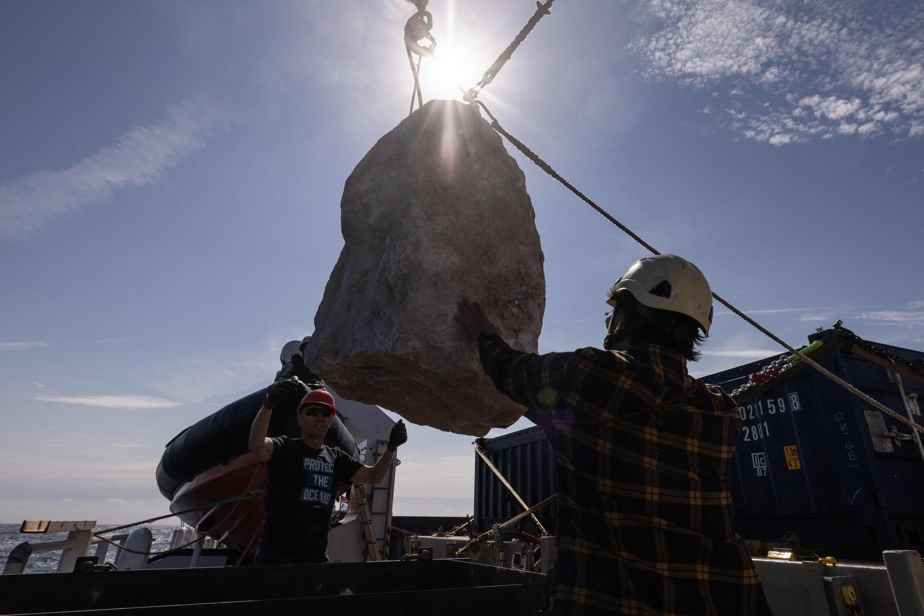Unlike the ships that usually sail off the southwestern tip of England, the crew of Greenpeace does not throw nets into the sea, but huge blocks of stone. Its objective: to prevent “destructive” industrial fishing practices.
Posted at 10:01 a.m.
On board theArctic Sunrisethe famous oceanographic vessel of the environmental group, activists dropped at sea on Thursday, in the heart of an officially protected marine area, 18 blocks of limestone weighing between 500 and 1400 kilos.
The idea: to make bottom trawl fishing impossible, these huge nets used by huge fishing vessels that damage the seabed and kill non-target species.
“We are placing large limestone rocks on the seabed to create a protective barrier that will keep the area out of reach of destructive fishing,” Anna Diski, an activist on board the boat, told AFP.
What “immediately prevent destructive trawlers from being able to operate in the area by preventing them from dragging their fishing nets along the seabed,” she adds.
For Will McCallum, responsible for Greenpeace UK, this is an action “to protect the oceans as a last resort”. “We would much rather see the government doing its job,” he said, as bottom trawls are allowed in most of the country’s marine protected areas.
For him, the authorization of such a practice in these areas is “scandalous” and “ridicules our so-called (policy of) ‘protection'”.
Modify licenses
“For our future”, “Simon Pegg” or even “Stephen Fry”: the activists have written messages or the names of celebrities who support the action on the limestone blocks.
One of the rocks thrown into the sea was cut in the shape of an ammonite, a fossil that is often found in the rocks of Portland, a peninsula on the English Jurassic Coast from which the stone blocks come.
Greenpeace’s action comes as talks at the UN failed last week to establish an international treaty for the oceans.
According to the environmental group, the South West Deeps are “one of the UK’s most heavily fished Marine Protected Areas”. He calls on the government and the future Prime Minister, who will be appointed next week, to “ban industrial fishing in all British marine protected areas by modifying fishing licenses”.
The organization cites figures from the observatory “Global Fishing Watch” which states that 110 vessels – more than half of which come from France – have fished nearly 19,000 hours in the area in 18 months.
Among them, bottom trawlers spent 3376 hours in the protected area.
“The UK has marine protected areas that are only protected in name. In the vast majority of cases, it is completely legal for industrial fishing vessels to fish there, taking large amounts of marine life, which destroys habitats, our fish stocks and the livelihoods of fishermen. locals,” says Anna Diski.
For Neil Whitney, a fisherman from the south of England quoted by Greenpeace, the practice amounts to “running a combine harvester through a national park”.
Bottom trawls “are capable of destroying an entire ecosystem and if they cause such a collapse, they just have to move elsewhere”, he laments. “Industrial fishing […] is destroying our marine environment, and small-scale British fishermen like myself are the big losers. »
According to him, it is “absurd” that bottom trawling is authorized in a protected marine area. These areas “are supposed to allow the species to redevelop”, he underlines. ” It is a matter of common sense. »
